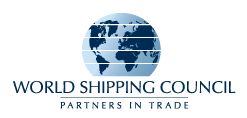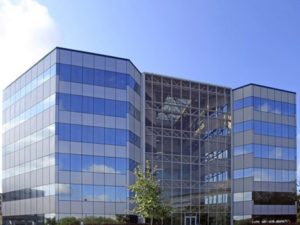 International standards limiting NOx, SOx, and PM emissions from ships are established through Annex VI of the International Convention for the Prevention of Pollution from Ships, otherwise known as MARPOL. Specific engine design standards, testing protocols, and extensive technical provisions relating to testing and enforcement of these standards are stipulated under MARPOL Annex VI and the NOx Technical Code. SOx and PM emissions are also controlled under MARPOL Annex VI through limitations on the maximum sulphur content allowed in fuels used on board ships or through achievement of equal or superior levels through the use of exhaust gas cleaning systems. Also controlled under MARPOL Annex VI are emissions of ozone depleting substances such as halons and chlorofluorocarbons (CFCs), volatile organic compounds (VOCs) incineration and energy-efficiency design standards for new ships.
International standards limiting NOx, SOx, and PM emissions from ships are established through Annex VI of the International Convention for the Prevention of Pollution from Ships, otherwise known as MARPOL. Specific engine design standards, testing protocols, and extensive technical provisions relating to testing and enforcement of these standards are stipulated under MARPOL Annex VI and the NOx Technical Code. SOx and PM emissions are also controlled under MARPOL Annex VI through limitations on the maximum sulphur content allowed in fuels used on board ships or through achievement of equal or superior levels through the use of exhaust gas cleaning systems. Also controlled under MARPOL Annex VI are emissions of ozone depleting substances such as halons and chlorofluorocarbons (CFCs), volatile organic compounds (VOCs) incineration and energy-efficiency design standards for new ships.
The Annex VI standards were first developed through the International Maritime Organization (IMO) in 1997 and then subject to major revision in October 2008. The October 2008 amendments have already resulted in significant reductions of NOx, SOx, and PM emissions around the world with extensive benefits to both human health and the environment.
The World Shipping Council was the first industry organization to explicitly support the adoption of stringent NOx, and SOx standards during negotiations in 2007 and 2008. In April 2008, WSC issued a statement of in support for new standards that were later adopted in October 2008 as a set of amendments to MARPOL Annex VI. These new standards form the basis for specific improvements to air emissions from ships to be realized in 2010, 2013, 2015, 2016, 202 and later years.
Global 0.50% Sulphur Limit
On January 1, 2020, the sulphur limit applicable to all marine fuels used across the world (excepting those ships using exhaust gas cleaning equipment or alternative fuels) will go from 3.5% to 0.5%. This global limit is estimated by the Organization for Economic Cooperation and Development (OECD) to cost between 5 and 30 billion USD in additional fuel costs for the world container fleet alone, beginning in 2020. The rule will result in very significant reductions in the amount of sulphur, particulate matter, and black carbon emitted by maritime transport operating across the globe. Introduction of the global 0.50% sulphur limit in 2020 will also require industry and governments to address a series of challenges associated with introduction, implementation, and enforcement of the global 0.50% sulphur limit. WSC, other industry organizations, and numerous governments, called for the IMO to begin discussions aimed at enhancing implementation of the 2020 sulphur limit. (see IMO submittal MEPC 70/5/2) The IMO’s Pollution Prevention and Response (PPR) Sub-Committee and the Marine Environment Protection Committee (MEPC) will begin such discussions in 2017.
Emission Control Areas (ECA)
SOx and PM emissions are controlled under MARPOL Annex VI through global standards applicable to all ships operating around the world and through Emission Control Areas (ECA) where more stringent limitations are applicable. The maximum sulfur content permitted in marine fuels is currently 3.5% while ships operating in designated emission control areas are subject to a 1% sulfur limit (10,000 ppm). The global limitation falls to 0.5% (5,000 ppm) in 2020. Limits in emission control areas fell from 1% to 0.1% (1,000 ppm) in 2015. These standards may also be met through the use of exhaust gas cleaning systems often referred to as “scrubbers.”
ECAs may be established under the revised Annex to give effect to more stringent standards applicable to SOx and PM, NOx, or all three. ECAs limiting SOx emissions have been established in: the Baltic Sea; the North East Atlantic, including the North Sea and waters to the Northwest adjacent to Southern Norway; in a 200 mile zone adjacent to North America for specific waters in the Pacific, Atlantic and Gulf coasts of the United States and Canada; and for selected waters in the Caribbean adjacent to Puerto Rico and the U.S. Virgin Islands. The North American and U.S. Caribbean ECAs also restrict NOx emissions.
MARPOL Annex VI provides a structure for governments to apply more stringent control technologies in emission control areas (ECA) that have been designated to apply advanced engine technology for new ships operating in these areas. Tier III NOx standards apply to new ships (built after January 1, 2016) in the North American and U.S. Caribbean ECAs. Tier III NOx controls will apply to ships built after January 1, 2021 and operating in the Baltic and North Sea ECAs.
Sulphur Limits Applicable in Specific Chinese Port Areas
China has established (outside of IMO MARPOL Annex VI structure), a marine sulphur limit of 0.50% applicable to fuel used while at berth in spcific ports in the Pearl River Delta Area, the Yangtze River Delta Area, and the Bohai Sea Area. In 2018, the 0.50% sulphur limit will apply to all ports within these three areas in China. In 2019, the 0.50% sulphur limit will apply to all operations with defined emission control areas (roughly 12 miles in coverage) in the Pearl River Delta Area, Yangtze River Delta Area, and the Bohai Sea Area.
Sub-Committee and the Marine Environment Protection Committee (MEPC) will begin such discussions in 2017.
Other controls
Other controls applicable to marine traffic in specific geographic areas include fuel quality limitations required by the California Air Resources Board (CARB) for vessels entering California ports and the requirement established by the European Commission for all vessels to use fuel with a maximum sulfur content of 1000 ppm (0.1% sulfur) while at berth in European Union ports. CARB also requires certain vessels (container ships, passenger ships, and refrigerated cargo ships) that visit California ports to connect to shore power while at berth when visiting California ports.

